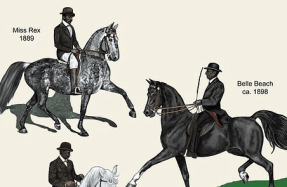THE GROWING THREAT OF TICKS

Ticks are relentless, blood-feeding ectoparasites that infest almost every type of animal, including horses. With a resume like thatyou’d think we’d all be on high alert, all the time, to ensure ticks are identified and disposed of before they have the opportunity to attach to our horses. However, equine tick infestations can go undetected, even by conscientious owners, due to the horse’s thick hair coat and the tick’s small size. Couple that with a widespread misconception that ticks only feed in warmer months of the year or in certain habitats, and ticks persist as a particularly icky equine parasite.
But ticks are more than gross. They can cause skin irritation, secondary infections at bite wounds and even anemia. Most concerning, ticks can pass along pathogens, such as those that cause equine piroplasmosis and Lyme disease. As global climate trends have led to increasing tick populations and expanded distributions, these tiny arachnids are becoming an increasingly significant equine health concern. All of which makes it more important than ever to learn which tick species are most likely to bite your horse and the threats they pose when they do.
THE SEVEN TICK SPECIES OF GREATEST CONCERN
Although many species of ticks can infest horses, some are more common than others. Geography, landscape and time ofyear influence which types of ticks your horse is most likely to encounter (see “Geographic Distribution,” page 62). Be aware that even less-common species can cause significant health problems, so it’s important to still be on alert for them. Here’s a rundown of ticks that most commonly cause problems in horses.
or and These small ticks are dark brown to black in color. found on horses is the black-legged in the United tick found in abundance in eastern States. North America while is encountered west of the Rocky Mountains; both species readily infest horses.
You’re reading a preview, subscribe to read more.
Start your free 30 days





